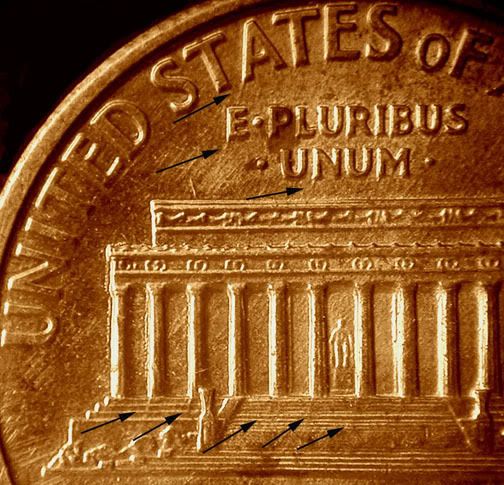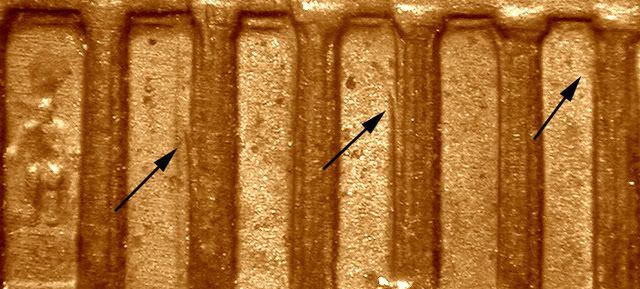First, I would like to say that these anomalies are a very underrated variety that has all the complexities of a doubled die and the numbers that may reach RPM proportions. This obscurity maybe due to the fact that the exact cause of how they are formed is still unknown, but that may change in the near future.
Two of the more debatable theories concerning these anomalies are; Is there a connection between "rails" and "wavy steps" and are they a doubled die. This discussion will be concerned with the correlation of the two anomalies to each other.
As Mike Diamond mentioned in the "variety image gallery (strongest wavy step to date)" it is common to see wavy steps without trails, however, it does happen and the below photos show such a die.



This is a picture of a 1994P Lincoln cent reverse. The top photo shows the combination of both trail lines from the A of STATES and some of the letters of EPU and the wavy steps below the columns (#2, 3, 5, 6, 7, 8 and 9). The next two photos are the magnified areas that are affected. All the lines, whether 'trails" or "wavy steps" travel in the same direction, 190 degrees. oddly enough, this is not the only die to show this correlation; there is another 1994P that has trail lines and wavy steps in a direction of 180 degrees and a 1998P that has trail lines and wavy steps in the direction of 170 degrees.
Not only do trail lines and wavy steps (fluting lines) travel in the same direction on the same die, their appearance is very similar in that they are narrow lines that taper off.
You may ask why this assumption is important. The answer is fairly simple but may have far reaching consequences. If trails and wavy steps are one and the same anomaly, then the theory that wavy steps is a doubled die is extremely questionable. The part that was supposedly doubled was the fluting lines in the column and it would not be possible for fluting lines to be in the EPU or in the word STATES or any of the other places trail lines have been seen. What we are seeing is not design element doubling but design element extension, something totally different.
This is the crux of the situation; do "Trail" dies (which would include wavy steps) deserve a stand alone classification, apart from doubled dies?
I thank you for your time and for reading this.
BJ Neff



Comment